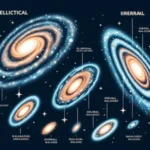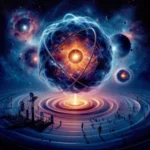As we gaze up at the night sky, filled with twinkling stars and distant galaxies, we are reminded of the vastness of the cosmos and the mysteries it holds.
From the birth of stars to the swirling dance of galaxies, the universe has captivated humanity’s imagination for centuries. But what does the future hold for this expansive realm? In this thought-provoking blog post, we will embark on a journey through the latest scientific discoveries and theories that attempt to unravel the fate of our universe. From the enigmatic nature of dark matter to the potential for cosmic expansion, we’ll explore the possibilities of what lies ahead—whether it be the slow fade into darkness, the dynamic emergence of new galaxies, or even the fascinating concept of multiverses. Join us as we delve into the incredible universe we inhabit and uncover the secrets of its future, igniting curiosity and wonder about our place in this magnificent cosmic tapestry.
1. Introduction to the Cosmos: A Brief Overview

The cosmos, an awe-inspiring expanse that encompasses all of existence, is a realm of mysteries waiting to be unlocked. From the glittering stars that punctuate the night sky to the vast, swirling galaxies that stretch beyond the limits of human perception, the universe is a grand tapestry woven from the threads of time and space. In this exploration of the cosmos, we embark on a journey that transcends dimensions and invites us to ponder the profound questions that have captivated humanity for centuries.
At its core, the cosmos is not just a collection of celestial bodies; it is a dynamic ecosystem filled with energy and life. The universe began with the monumental event known as the Big Bang, approximately 13.8 billion years ago, which set the stage for the formation of galaxies, stars, and planets. Since then, the cosmos has continued to expand and evolve, revealing an intricate interplay of forces that govern its structure and behavior.
As we delve deeper into the cosmos, we encounter phenomena that challenge our understanding of physics and ignite our curiosity. black holes, neutron stars, and dark matter are just a few of the enigmas that scientists strive to comprehend. Each discovery brings with it new questions, propelling us further down the rabbit hole of cosmic exploration.
In this post, we will not only examine the current state of our understanding of the universe but also explore the groundbreaking technologies and theories that may shape our future explorations. From advancements in telescopic technology that allow us to peer deeper into space than ever before, to the potential of human colonization of other planets, the future of our cosmic journey holds as much promise as it does mystery. Let us embark on this voyage together, gazing into the celestial wonders that lie ahead and contemplating what the cosmos may have in store for us.
2. The Current State of Our Universe
To understand the future of our universe, we first need to examine its current state. The cosmos is a vast and awe-inspiring expanse, characterized by its intricate tapestry of galaxies, stars, and celestial phenomena. As of now, our universe is roughly 13.8 billion years old, originating from the Big Bang, a colossal explosion that set everything into motion.
At present, we live in a universe that is expanding at an accelerating rate, a phenomenon driven by mysterious forces known as dark energy. This elusive substance makes up about 68% of the cosmos, yet its true nature remains one of the most significant puzzles in modern astrophysics. Meanwhile, dark matter, which constitutes about 27% of the universe, interacts with ordinary matter primarily through gravity, shaping the structure of galaxies and clusters. Only about 5% of the universe is composed of the matter we are familiar with—stars, planets, and interstellar gas.
In addition to these cosmic components, the observable universe is teeming with diverse celestial objects. From the majestic spiral arms of the Milky Way, where our solar system resides, to the enigmatic black holes that warp space and time, we are surrounded by an array of phenomena that challenge our understanding. Recent advances in technology have allowed astronomers to peer deeper into space, revealing the existence of exoplanets, some potentially harboring the conditions for life, and countless galaxies that stretch far beyond the limits of our previous knowledge.
Moreover, the cosmic microwave background radiation—the afterglow of the Big Bang—provides a snapshot of the early universe, giving us valuable insights into its formation and evolution. Studies of this faint radiation help scientists refine models of cosmic history and explore the fundamental forces that govern the universe.
As we delve deeper into the current state of the universe, it becomes clear that we are on the brink of monumental discoveries. The interplay of cosmic forces and matter, the exploration of distant galaxies, and the search for extraterrestrial life all contribute to a growing understanding of our place in the universe. With each new finding, we inch closer to unraveling the mysteries of the cosmos, setting the stage for what lies ahead in our celestial journey.
3. Key Theories in Cosmology
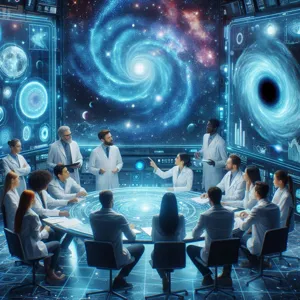
Cosmology, the scientific study of the universe’s origins, evolution, and eventual fate, is a field rich with intriguing theories that help us comprehend the cosmos and our place within it. At the forefront of these theories are the Big Bang Theory, the Steady State Theory, and Dark Energy, each offering unique insights into the fabric of the universe.
The **Big Bang Theory** posits that approximately 13.8 billion years ago, the universe began as an infinitely dense point, which rapidly expanded and cooled, leading to the formation of matter, stars, and galaxies. This theory is supported by a wealth of observational evidence, including the cosmic microwave background radiation and the redshift of distant galaxies, which indicate that the universe is continuously expanding. As researchers delve deeper into this theory, they are uncovering details about the conditions of the early universe and the forces that shaped its development.
In contrast, the **Steady State Theory**, once a prominent contender, suggests that the universe has no beginning or end but is in a constant state of creation, with new matter being formed as galaxies move apart. While this theory has fallen out of favor due to the overwhelming evidence supporting the Big Bang, it still provides an interesting perspective on the universe’s nature, prompting discussions about the possibility of an eternal cosmos.
Another critical area of exploration is **Dark Energy**, a mysterious force that makes up about 68% of the universe and is driving its accelerated expansion. Although little is known about dark energy, its existence was hinted at through observations of distant supernovae and the large-scale structure of the universe. Understanding dark energy could reshape our comprehension of cosmic fate, leading to scenarios such as the “Big Freeze,” where galaxies drift further apart into an ever-cooler cosmos, or the “Big Crunch,” where gravitational forces eventually pull everything back to a singular point.
These key theories in cosmology not only deepen our understanding of the universe’s history and structure but also pave the way for future discoveries. As new technologies and methodologies emerge, astronomers and physicists continue to unravel the mysteries of the cosmos, raising questions about the very nature of reality and our role within this vast and ever-expanding universe. As we stand on the cusp of new astronomical revelations, the future holds the promise of exciting discoveries that could redefine our understanding of existence itself.
4. The Role of Dark Matter and Dark Energy
As we embark on a journey to understand the future of our universe, we must first delve into the enigmatic realms of dark matter and dark energy. Together, these two components constitute about 95% of the cosmos, yet remain shrouded in mystery, eluding direct observation and comprehension.
Dark matter, which makes up approximately 27% of the universe, acts as a gravitational glue that holds galaxies and galaxy clusters together. Despite being invisible and undetectable through conventional means, its presence is inferred from the way light bends around massive structures and the motion of celestial bodies within galaxies. As we look toward the future, unraveling the nature of dark matter could unlock secrets about the formation and evolution of the universe itself, potentially leading to groundbreaking discoveries that challenge our current understanding of physics.
On the other hand, dark energy—comprising around 68% of the universe—drives its accelerated expansion. This mysterious force pushes galaxies apart at an ever-increasing rate, leading scientists to ponder the ultimate fate of the cosmos. Will this relentless expansion continue indefinitely, stretching the universe into a cold, dark void known as the “Big Freeze”? Or could it eventually reverse, culminating in a dramatic “Big Crunch”? The answers to these profound questions hinge on our ability to decode the properties and behavior of dark energy.
As researchers employ advanced telescopes and cutting-edge technologies to probe deeper into the cosmos, we stand on the brink of potentially revolutionary insights. Future missions, like NASA’s upcoming space telescopes, aim to map the distribution of dark matter and measure the effects of dark energy with unprecedented precision. These explorations may also lead to the discovery of new particles or forces, fundamentally altering our understanding of the universe.
In essence, the roles of dark matter and dark energy are not just crucial for comprehending where we are in the cosmos, but they also hold the key to predicting what lies ahead. As we continue to explore these cosmic mysteries, we inch closer to unveiling the grand tapestry of our universe and our place within it.
5. The Fate of Stars: Life Cycles and End States
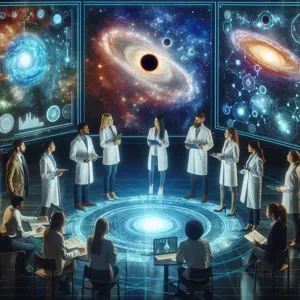
The universe is a grand tapestry woven from the life cycles of countless stars, each playing a pivotal role in the cosmic narrative. From the moment they ignite in a dazzling display of nuclear fusion to their eventual demise, stars exemplify nature’s incredible ability to create and transform. Understanding the fate of stars gives us profound insights into not only their individual journeys but also the evolutionary trajectory of the universe itself.
Stars begin their lives in nebulae—vast clouds of gas and dust that serve as stellar nurseries. Under the influence of gravity, these materials clump together, gradually heating up until nuclear reactions ignite in the core, marking the birth of a new star. This initial phase can last millions of years, with stars like our Sun settling into a stable phase known as the main sequence, where they will spend the majority of their lifetimes, steadily converting hydrogen into helium.
As a star exhausts its hydrogen fuel, its evolution takes one of several paths, dictated by its initial mass. Massive stars—those at least eight times more massive than the Sun—progress rapidly through their life cycles. They swell into red supergiants, ultimately culminating in spectacular supernova explosions that scatter heavier elements across the cosmos. These remnants may collapse into neutron stars or black holes, enigmatic objects that warp the fabric of space-time itself.
In contrast, smaller stars like our Sun will expand into red giants, shedding their outer layers and leaving behind a hot core that cools over time to become a white dwarf. This white dwarf will eventually fade into a cold, dark remnant known as a black dwarf, a theoretical end state that has yet to be observed, as the universe remains too young for such an object to exist.
The life and death of stars are not just fascinating tales of transformation; they are the very processes that forge the elements necessary for life. Carbon, oxygen, iron—elements that make up our bodies and the world around us—are produced in the fiery hearts of stars and released into the universe when they die. This cosmic recycling ensures that, even in their demise, stars contribute to the ongoing saga of creation, paving the way for new solar systems and, ultimately, new forms of life.
As we gaze into the night sky, we are reminded that the stars we see are not just distant points of light but echoes of a dynamic universe, one that is ever-evolving. Their fate is intertwined with our own, as we too are made of star stuff, a testament to the intricate connections that bind us to the cosmos. In exploring the life cycles and end states of stars, we also explore our place in the universe, deepening our understanding of the intricate dance of creation and destruction that defines existence itself.
6. Galactic Evolution: Mergers and Interactions
Galactic evolution is a dynamic and fascinating process, marked by the intricate dance of mergers and interactions between galaxies. As we gaze into the depths of space, we witness the ongoing transformations that shape the cosmos, revealing a narrative of cosmic evolution that unfolds over billions of years.
When galaxies collide, they do not simply crash into one another; rather, they engage in a complex gravitational interplay that can result in spectacular phenomena. These encounters can lead to the formation of new star systems, the reshaping of galactic structures, and even the birth of entirely new galaxies. For example, the Milky Way is on a collision course with the Andromeda Galaxy, a massive event that is estimated to occur in about 4.5 billion years. This future merger promises to dramatically alter the fabric of both galaxies, creating a new, larger galaxy that will forever change the night sky.
Interactions between galaxies can also trigger bursts of star formation. When two galaxies pass close to each other, their gravitational fields can distort their shapes, causing gas and dust to compress and ignite new stars. This process infuses the universe with fresh energy and light, creating vibrant nebulae and clusters of young stars that shine brightly in the cosmos. Observations from powerful telescopes reveal stunning images of these interactions, where the beauty of celestial bodies is intertwined with the chaos of their collisions.
Moreover, the study of galactic mergers offers valuable insights into dark matter—the elusive substance that makes up a significant portion of the universe’s mass. By analyzing the motion of galaxies in dense clusters, astronomers can infer the distribution of dark matter and its role in galactic formation and evolution. Understanding these interactions not only enhances our knowledge of how galaxies grow and evolve but also sheds light on the fundamental forces that govern the universe.
As we look to the future, the continued study of galactic evolution will undoubtedly reveal more about the intricate web of interactions that shape our universe. Each merger and encounter tells a story of cosmic history and offers clues about the ultimate fate of galaxies. Will they continue to collide and merge, creating a tapestry of interconnected stellar systems, or will they eventually drift apart, becoming isolated islands in the vast expanse of space? The answers remain to be uncovered, inviting us to ponder the mysteries of our ever-evolving cosmos.
7. The Expansion of the Universe: What It Means for the Future
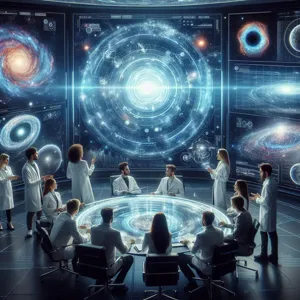
The expansion of the universe is not just a cosmic fact; it’s a fundamental aspect that shapes our understanding of existence and the future of everything within it. Since the discovery in the 1920s that galaxies are moving away from us, scientists have been piecing together the implications of this ever-accelerating expansion. Today, we stand on the brink of profound revelations about the fate of our universe.
As galaxies recede from each other, the fabric of space itself stretches, leading to the intriguing possibility that, in the distant future, they may become unreachable. This concept is often illustrated by the ‘cosmological horizon,’ a boundary that marks the limit of our observable universe. Objects beyond this horizon may never be seen again, fading into the cosmic void. For astronomers and cosmologists, this raises questions about the ultimate fate of galaxies, stars, and even the very atoms that make up matter.
One of the leading theories regarding the expansion is the notion of a “Big Freeze,” where the universe continues to expand indefinitely. In this scenario, as stars burn out and galaxies drift apart, the universe will become an increasingly cold and dark place, leading to a state known as heat death. This is a universe where all thermodynamic processes cease as energy is evenly distributed, leaving behind an eerie silence.
Alternatively, there is the hypothesis of the “Big Rip,” where the force driving the expansion, attributed to dark energy, grows stronger over time. In this scenario, galaxies, stars, planets, and eventually atoms themselves would be torn apart in a catastrophic finale to cosmic existence. While this may sound like science fiction, ongoing research into dark energy and the universe’s rate of expansion continues to provide critical insights.
As we ponder the implications of the universe’s expansion, we must also consider our place within it. The reality of an ever-expanding cosmos challenges us to rethink the concepts of life, time, and space. How do we find meaning in a universe that is constantly changing, and what does our future hold in the grand tapestry of existence? By exploring these questions, we engage not only with the scientific aspects of our universe but also with the philosophical implications of our ephemeral place in a vast and ever-evolving cosmos.
In the coming decades, as technology and understanding progress, we may uncover new facets of the universe’s expansion, deepening our connection to the cosmos and perhaps revealing the ultimate destiny that awaits us all.
8. The Big Freeze vs. The Big Crunch: Possible Scenarios
The fate of our universe is a captivating enigma that has puzzled astronomers and cosmologists for decades. Two leading theories, known as the Big Freeze and the Big Crunch, offer contrasting visions of what awaits us in the distant future.
The **Big Freeze** posits a scenario in which the universe continues to expand indefinitely. As galaxies drift further apart, stars will eventually exhaust their nuclear fuel, leading to a dark and chilling cosmos. Over trillions of years, the once vibrant skies will fade into a sea of darkness, where only the faint glow of distant, dying stars remains. In this cold, desolate expanse, black holes will dominate, slowly evaporating over immense timescales. The universe will become an icy graveyard, where matter is sparse and energy is nearly nonexistent, rendering it inhospitable to any form of life as we know it.
In stark contrast, the **Big Crunch** theorizes that the universe may one day stop its expansion and begin to contract. If the gravitational pull of all the matter in the universe is strong enough, celestial bodies will begin to move closer together, ultimately collapsing into a singularity. This scenario would lead to a cataclysmic end, potentially culminating in a fiery rebirth akin to a cosmic reset. The implications of such a collapse are profound: galaxies would merge, stars would collide, and the universe would return to the conditions of the Big Bang, where space and time as we know it cease to exist.
Both theories are grounded in current observations and research, yet the ultimate fate of our universe remains uncertain. As scientists continue to explore the cosmos using advanced telescopes and theoretical models, the quest to understand which scenario — the icy solitude of the Big Freeze or the explosive finale of the Big Crunch — will prevail is a thrilling frontier of modern astrophysics. Each possibility invites us to ponder our existence in the grand tapestry of time and space, and the role humanity plays in the unfolding story of the universe.
9. Human Exploration: What We Can Expect in the Next Century
As we look into the future of human exploration in the cosmos, the next century promises to be an era of unprecedented discovery and innovation. With advancements in technology and a growing interest in space travel, humanity stands on the brink of becoming a multi-planetary species. The excitement is palpable as space agencies and private companies alike ramp up their efforts to push the boundaries of what is possible.
One of the most anticipated milestones is the return to the Moon. NASA’s Artemis program aims to establish a sustainable presence on the lunar surface by the late 2020s, paving the way for further exploration. This lunar outpost will serve as a launchpad for deeper space missions, including crewed missions to Mars. Imagine astronauts living and working on the Moon, conducting experiments that could unlock the secrets of our solar system while simultaneously preparing for the challenges of interplanetary travel.
Meanwhile, Mars has captured the imagination of scientists and dreamers alike. The prospect of sending humans to Mars by the 2030s is becoming increasingly feasible. The development of advanced propulsion systems and life support technologies could soon allow us to embark on a journey that takes several months, and ultimately, sets the stage for colonization. Picture a future where humans not only visit the Red planet but also establish habitats, grow food, and conduct research in the unique Martian environment.
Beyond our solar system, the search for exoplanets in habitable zones is intensifying. Telescopes like the James Webb Space Telescope and future missions will provide us with unprecedented views of distant worlds, identifying potential candidates for life beyond Earth. As we gather data on these new planets, the dream of interstellar exploration—traveling to other star systems—may shift from science fiction to science fact. Technologies such as solar sails and theoretical concepts like warp drives could one day facilitate journeys that span light-years.
As we venture into the cosmos, ethical considerations will also play a crucial role in shaping our future. The potential for contamination, the preservation of celestial bodies, and the rights of potential extraterrestrial life are all topics that will need careful deliberation. Humanity’s approach to these challenges will define not only our exploration efforts but also our legacy in the universe.
In summary, the next century of human exploration promises a thrilling journey filled with challenges and triumphs. From lunar bases to Martian colonies and beyond, our quest to understand the cosmos will likely redefine our place in the universe, ignite our curiosity, and inspire generations to come. As we stand at the threshold of these monumental endeavors, one thing is clear: the future of exploration is bright, and humanity’s story is just beginning to unfold among the stars.
10. The Search for Extraterrestrial Life
The quest to discover extraterrestrial life is one of the most tantalizing pursuits in modern science, capturing the imagination of astronomers and enthusiasts alike. For centuries, humanity has gazed at the stars, wondering if we are alone in this vast cosmos. With advances in technology and our understanding of the universe, the search for life beyond Earth has gained unprecedented momentum.
Scientists are now utilizing powerful telescopes and sophisticated instruments to explore distant exoplanets—worlds that orbit stars outside our solar system. The Kepler Space Telescope, for instance, has identified thousands of these planets, many of which lie within the “Goldilocks zone,” where conditions might be just right for life to exist. Researchers are particularly interested in locating planets with atmospheres that could support liquid water, a crucial ingredient for life as we know it.
Moreover, missions to our own solar system have intensified our search for signs of life. The Mars rovers, such as Perseverance and Curiosity, are actively analyzing the Martian surface for evidence of past microbial life. The icy moons of Jupiter and Saturn, like Europa and Enceladus, are also prime targets, as their subsurface oceans may harbor alien organisms. Armed with advanced sensors and instruments, these missions are paving the way for deeper investigations into the potential for life beyond our blue planet.
In tandem with these explorations, the field of astrobiology is blossoming. Scientists are not only looking for life as we know it but are also considering the possibilities of entirely different life forms that may thrive in environments previously thought to be inhospitable. This shift in perspective opens up a universe of possibilities, allowing us to imagine creatures that could exist in extreme conditions, from the intense heat of Venus to the frigid depths of ocean worlds.
The search for extraterrestrial life is not merely an academic exercise; it raises profound questions about our place in the universe. If we were to discover even the simplest forms of life elsewhere, it would fundamentally alter our understanding of biology, evolution, and the very nature of existence. As we continue to explore the cosmos, the tantalizing prospect of finding life—whether microbial or intelligent—remains one of the most thrilling frontiers of scientific discovery, igniting our curiosity and fueling our dreams of what lies beyond the stars.
11. Technological Advances in Astronomy
The realm of astronomy is on the brink of a revolution, driven by remarkable technological advances that are reshaping our understanding of the cosmos. Gone are the days when astronomers relied solely on rudimentary telescopes and visual observations. Today, cutting-edge tools and innovative methodologies are enabling us to peer deeper into the universe than ever before.
One of the most significant breakthroughs is the development of space-based observatories, such as the James Webb Space Telescope (JWST). Launched in late 2021, JWST is designed to observe the universe in infrared wavelengths, allowing it to see through cosmic dust and gas clouds that obscure traditional optical telescopes. This revolutionary technology is expected to enhance our knowledge of star formation, the formation of planetary systems, and even the atmospheres of exoplanets. As we receive the first images and data from JWST, the astronomical community is buzzing with excitement about the potential discoveries awaiting us.
Moreover, advancements in artificial intelligence and machine learning are transforming data analysis in astronomy. With the vast amounts of data generated by modern telescopes, astronomers are increasingly turning to AI algorithms to identify patterns and anomalies that would be nearly impossible to detect manually. This not only accelerates the pace of discovery but also opens up new avenues for research, allowing scientists to focus on interpretation rather than tedious data processing.
Collaborative efforts across the globe have also become more streamlined, thanks to digital communication and data-sharing platforms. Astronomers can now share observations and findings in real-time, fostering a more interconnected scientific community. Initiatives like the Large Synoptic Survey Telescope (LSST) are set to generate an unprecedented amount of survey data, allowing researchers from various disciplines to work together and unravel the mysteries of dark matter and dark energy.
As we look to the future, the potential for technological advances in astronomy seems limitless. From the upcoming missions to Mars and beyond to the exploration of gravitational waves, our quest to understand the cosmos will continue to be fueled by innovation. With each leap forward, we are not only uncovering the secrets of our universe but also igniting a sense of wonder and curiosity that inspires generations to come. The cosmos is vast and mysterious, and thanks to these advancements, we are better equipped than ever to explore its depths.
12. The Importance of Theoretical Physics in Understanding the Universe
Theoretical physics plays a crucial role in unraveling the complexities of our universe, serving as the backbone for many of the advancements we’ve made in understanding cosmic phenomena. While observational astronomy allows us to gather data about the stars, galaxies, and cosmic events, it is theoretical physics that interprets this information, providing the frameworks and models that help us make sense of what we observe.
Consider the Big Bang theory, for instance; it offers a compelling explanation of the universe’s origin and evolution, yet it is through theoretical constructs that we explore the dynamics of this explosive event. Without the equations of general relativity, we could not fully grasp how spacetime itself was warped in the aftermath of the Big Bang. Similarly, theories like quantum mechanics enable us to peer into the subatomic realms, revealing the intricate dance of particles that compose everything we see.
Moreover, theoretical physics is essential in addressing some of the most profound questions about existence. Concepts such as dark matter and dark energy remain elusive, yet they dominate the universe’s structure and fate. Through speculative theories and mathematical models—like string theory or loop quantum gravity—scientists attempt to bridge the gaps in our understanding, offering possible explanations for these enigmatic components that constitute about 95% of the universe.
As we look to the future, the interplay between theoretical physics and empirical observation will undoubtedly deepen. Advances in technology, such as more powerful telescopes and particle accelerators, will allow us to test these theories against the backdrop of the cosmos. With each discovery, theoretical physicists will refine their models, leading us closer to a more cohesive understanding of the universe. The journey is a testament to the power of human curiosity and intellect, as we strive to decode the mysteries of existence that lie beyond the stars.
In essence, theoretical physics not only enriches our comprehension of the universe but also inspires new generations of scientists and thinkers to explore the infinite possibilities that await us in the cosmos. The quest for knowledge is far from over, and the insights garnered from this field will continue to shape our collective understanding of the universe for years to come.
13. Philosophical Implications of a Changing Cosmos
As we delve into the mysteries of our ever-evolving universe, it becomes increasingly clear that the philosophical implications of a changing cosmos are profound and far-reaching. The cosmos, once perceived as a static backdrop to human existence, is now understood to be a dynamic tapestry woven from the threads of time, space, and energy. This realization challenges our long-held beliefs about the nature of reality, our place within it, and the very essence of existence itself.
At the heart of this philosophical exploration lies the question of purpose. As scientists uncover the intricate workings of dark matter, dark energy, and the accelerating expansion of the universe, we are prompted to reflect on the significance of our own existence in the grand cosmic scheme. Are we mere observers in a vast, indifferent universe, or do we play an integral role in its unfolding story? This inquiry invites us to ponder the meaning of life and our responsibilities as conscious beings within a cosmos that is perpetually in flux.
Moreover, the notion of time itself is redefined in light of our expanding universe. The concept of a linear timeline, with a clear past, present, and future, is increasingly challenged by theories of cyclical time and multiverses. This invites deeper philosophical discussions about fate, free will, and the nature of change. If the universe is constantly evolving, how do our choices echo through the fabric of reality? Are we shaping the cosmos, or are we merely experiencing its predetermined trajectory?
Additionally, as we confront the potential for extraterrestrial life and the vastness of the cosmos, we are compelled to reconsider the anthropocentric view that has long dominated our understanding. The possibility of intelligent life beyond Earth raises questions about our uniqueness and the universality of consciousness. What does it mean to be human in a universe that may host countless other sentient beings? This exploration fosters a sense of humility and interconnectedness, urging us to recognize that we are part of a larger cosmic community.
In contemplating the philosophical implications of a changing cosmos, we are not just observing from a distance; we are engaging in a dialogue with the universe itself. Each discovery, each revelation, adds layers to our understanding of existence and our role within it. As we continue to explore the cosmos, we are invited to embrace the uncertainties and complexities of our reality, ultimately fostering a deeper appreciation for the intricate dance of creation and the endless possibilities that lie ahead.
14. How Citizens Can Participate in Cosmic Exploration
As we stand on the precipice of a new era in cosmic exploration, the role of citizens in unraveling the mysteries of the universe has never been more crucial. With advancements in technology and the democratization of space science, everyday individuals can now play an active part in the quest to understand our cosmos.
One of the most accessible ways for citizens to engage is through citizen science projects. Platforms like Zooniverse invite enthusiasts to contribute to real scientific research by classifying galaxies, identifying exoplanets, or even analyzing data from space missions. These collaborative efforts not only amplify the reach of scientific studies but also empower citizens to feel connected to the grand narrative of cosmic exploration.
Moreover, social media and online forums have created vibrant communities around astronomy and space science. Individuals can share observations, discuss findings, and participate in global star-gazing events, fostering a sense of camaraderie among space enthusiasts. Local astronomy clubs often host public viewing nights, providing telescopes and expert guidance, making the wonders of the night sky accessible to all.
Additionally, educational programs and workshops hosted by museums and planetariums serve to ignite passion in budding astronomers. Many institutions offer hands-on experiences where participants can learn about the latest space missions, the physics of black holes, and even the potential for life on other planets. By equipping people with knowledge and tools, the next generation of cosmic explorers is being nurtured within our communities.
Finally, the rise of private space exploration companies has opened new avenues for citizen involvement. From crowdfunding for missions to opportunities for citizen astronauts to participate in suborbital flights, the dream of venturing into space is becoming more tangible. As these opportunities grow, so too will the public’s engagement with the cosmos, blending the lines between professional scientists and passionate amateurs.
In essence, the future of cosmic exploration is a collective endeavor. By harnessing the enthusiasm and intellect of citizens everywhere, we can propel our understanding of the universe further than ever before. Each contribution, no matter how small, adds to the tapestry of knowledge that will ultimately guide us in our quest to explore the stars.
15. Conclusion: Embracing the Unknown Future of Our Universe
As we stand on the precipice of cosmic exploration, the future of our universe remains an enigmatic tapestry woven with both uncertainty and potential. The vastness of space, with its myriad of galaxies, stars, and uncharted phenomena, invites us to embrace the unknown rather than fear it. With each passing year, our understanding of the cosmos deepens, fueled by advancements in technology and a relentless quest for knowledge.
While we have made remarkable strides—from landing rovers on distant planets to capturing images of black holes—the journey ahead is fraught with questions that challenge the very fabric of our existence. What lies beyond the observable universe? Are we alone in the cosmos, or do other intelligent life forms inhabit distant worlds? As we venture further into the depths of space, we must remain open to possibilities that may defy our current understanding of physics and biology.
The unknown is not merely a void; it is a canvas of opportunity. It beckons scientists, astronomers, and dreamers alike to imagine, explore, and innovate. The future may hold discoveries that revolutionize our understanding of time, space, and the nature of reality itself. As we continue to push the boundaries of what is known, we must cultivate a spirit of curiosity and collaboration, uniting humanity in the pursuit of cosmic truth.
In conclusion, as we explore the cosmos, let us embrace the unknown with wonder and resilience. The universe is a vast, mysterious expanse, and our journey is just beginning. Each discovery, each unanswered question, and each leap into the dark enhances our collective narrative, reminding us that while we may not have all the answers, the quest for knowledge is a noble endeavor that binds us to the stars. Let us step forward with courage and hope, ready to uncover the secrets of the universe that await beyond the horizon.
As we conclude our journey through the cosmos, it’s clear that the future of our universe remains a tapestry woven with mystery, possibility, and awe-inspiring discoveries. The insights we’ve explored—from the expansion of galaxies to the tantalizing prospects of dark matter and energy—paint a vivid picture of a universe that is still revealing its secrets. As scientists continue to push the boundaries of human knowledge and technology, we can expect groundbreaking advancements that may reshape our understanding of existence itself. Whether it’s the quest for extraterrestrial life or the exploration of distant worlds, the future holds limitless potential for humanity’s exploration of the cosmos. So, let us gaze at the stars with curiosity and wonder, for the universe is not just a vast expanse of space; it is an invitation to dream, discover, and redefine what is possible. Thank you for joining us on this cosmic voyage, and may your passion for the universe inspire you to seek out the unknown and embrace the adventure that lies ahead.


